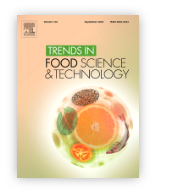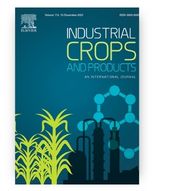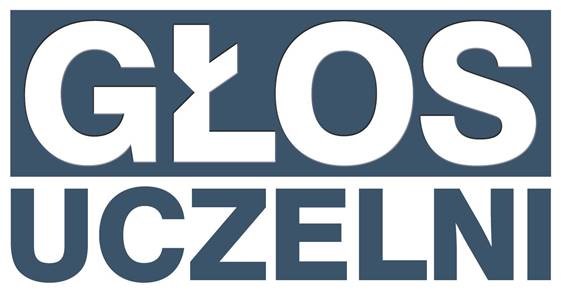
Research papers of the month – December 2023
We present the highest-score research papers of December 2023. These papers have ben published in journals with the highest Ministerial score – 200 points.
Cold plasma as an emerging energy-saving pretreatment to enhance food drying: Recent advances, mechanisms involved, and considerations for industrial applications
Mohsen Gavahian; Pratik Nayi; Klaudia Masztalerz; Antoni Szumny; Adam Figiel
Trends in Food Science & Technology
Ministerial score = 200.0
Journal Impact Factor (2023) = 15.3 (Q1)
 Background Cold plasma (CP) is an emerging nonthermal technology that has shown promise in improving food safety. It has been recently used to enhance the drying process as one of the most energy-intensive processes in the food industry. Scope and approach This review explores the application of CP pretreatment for enhancing the drying process. It also discusses the mechanisms involved in the plasma-enhanced drying process. Furthermore, the effects of CP pretreatment on the drying characteristics and quality of dried foods, such as color, texture, and nutritional content, can be improved. Key findings and conclusion Most studies (85%) explored the combination of CP and hot air drying, suggesting a need to research other drying technologies. CP enhances the drying rate and reduces drying energy consumption (∼25%), contributing to achieving sustainable development goals (SDGs). It also can improve dried products' quality (e.g., antioxidants and beneficial bioactive content) and reduce 5-hydroxymethylfurfural as a health-threatening chemical. In addition to the generally accepted theory on plasma-induced surface changes, authors hypothesized that possible mechanisms behind the reduced drying time are moisture removal during CP pretreatment and changes in internal structure (within the plasma reactive species penetration depth), which can prevent case-hardening, and consequently shorten the falling rate period of drying. Also, cold plasma treatment can increase moisture diffusivity, resulting in shorter drying times. Industrial applications require further efforts to achieve regulatory bodies' approval and to develop cost-effective upscaled units.
Background Cold plasma (CP) is an emerging nonthermal technology that has shown promise in improving food safety. It has been recently used to enhance the drying process as one of the most energy-intensive processes in the food industry. Scope and approach This review explores the application of CP pretreatment for enhancing the drying process. It also discusses the mechanisms involved in the plasma-enhanced drying process. Furthermore, the effects of CP pretreatment on the drying characteristics and quality of dried foods, such as color, texture, and nutritional content, can be improved. Key findings and conclusion Most studies (85%) explored the combination of CP and hot air drying, suggesting a need to research other drying technologies. CP enhances the drying rate and reduces drying energy consumption (∼25%), contributing to achieving sustainable development goals (SDGs). It also can improve dried products' quality (e.g., antioxidants and beneficial bioactive content) and reduce 5-hydroxymethylfurfural as a health-threatening chemical. In addition to the generally accepted theory on plasma-induced surface changes, authors hypothesized that possible mechanisms behind the reduced drying time are moisture removal during CP pretreatment and changes in internal structure (within the plasma reactive species penetration depth), which can prevent case-hardening, and consequently shorten the falling rate period of drying. Also, cold plasma treatment can increase moisture diffusivity, resulting in shorter drying times. Industrial applications require further efforts to achieve regulatory bodies' approval and to develop cost-effective upscaled units.
DOI:10.1016/j.tifs.2023.104210
Essential oil profiles, improvement of enzymatic and non-enzymatic antioxidant systems in different populations of Salvia subg. Perovskia by irrigation management
Mahvash Afshari; Mehdi Rahimmalek; Mohammad R. Sabzalian; Mehran Miroliaei; Antoni Szumny
Industrial Crops and Products
Ministerial score = 200.0
Journal Impact Factor (2023) = 5.9 (Q1)
 Salvia subg. Perovskia is an aromatic medicinal plant from the Lamiaceae family. Essential oil (EO) content and composition, along with enzymatic and non-enzymatic antioxidants, were evaluated in 18 plant populations under three levels of irrigation for two consecutive years. Based on the GC-MS analysis, the main components of EO were borneol (1.18–36.53%), followed by camphor (0.54–32.17%), 1,8-cineole (12.44–29.26%), δ-3-carene (0.39–21.20%), myrcene (0.59–16.28%), and α- pinene (0.79–12.87%) in the studied treatment. Except for malondialdehyde and hydrogen peroxide in leaves and roots, all the examined parameters showed lower values in the first harvest year compared to those of the second year. The activities of antioxidant enzymes, total phenolics, and flavonoids of the extracts were substantially enhanced as stress intensified to reach maximum values in leaves under severe stress and in roots under moderate stress conditions. The maximum root tanshinones content was observed under moderate water deficit conditions, while the highest EO content was obtained in plants exposed to severe stress conditions. Taking into account the evidence provided by this study, it can be inferred that the use of water deficit stress can serve as an effective method to stimulate and improve antioxidant properties, as well as the quantity and quality of secondary metabolites in Salvia subg. Perovskia.
Salvia subg. Perovskia is an aromatic medicinal plant from the Lamiaceae family. Essential oil (EO) content and composition, along with enzymatic and non-enzymatic antioxidants, were evaluated in 18 plant populations under three levels of irrigation for two consecutive years. Based on the GC-MS analysis, the main components of EO were borneol (1.18–36.53%), followed by camphor (0.54–32.17%), 1,8-cineole (12.44–29.26%), δ-3-carene (0.39–21.20%), myrcene (0.59–16.28%), and α- pinene (0.79–12.87%) in the studied treatment. Except for malondialdehyde and hydrogen peroxide in leaves and roots, all the examined parameters showed lower values in the first harvest year compared to those of the second year. The activities of antioxidant enzymes, total phenolics, and flavonoids of the extracts were substantially enhanced as stress intensified to reach maximum values in leaves under severe stress and in roots under moderate stress conditions. The maximum root tanshinones content was observed under moderate water deficit conditions, while the highest EO content was obtained in plants exposed to severe stress conditions. Taking into account the evidence provided by this study, it can be inferred that the use of water deficit stress can serve as an effective method to stimulate and improve antioxidant properties, as well as the quantity and quality of secondary metabolites in Salvia subg. Perovskia.
DOI:10.1016/j.indcrop.2023.117849
Attenuation of protein glycation by phenolic compounds of Salvia subg. Perovskia: Insights from experimental and computational studies
Mahvash Afshari; Mehdi Rahimmalek; Mehran Miroliaei; Mohammad R. Sabzalian; Morteza Sadeghi; Adam Matkowski; Antoni Szumny
Industrial Crops and Products
Ministerial score = 200.0
Journal Impact Factor (2023) = 5.9 (Q1)
 Despite the fact that most of the studied activities of plant phenolic compounds rely on their antioxidant properties, few clues about their antiglycation activity are available. Therefore, the aim of this study was to investigate the potential of phenolic compounds to suppress the formation of advanced glycation end products (AGEs) in the leaf and root system of two Salvia subg. perovskia species. The study evaluated the antiglycation activity of the plant species and the main polyphenolic profiles in the bovine serum albumin (BSA)/methylglyoxal (MGO) system. High-performance liquid chromatography (HPLC) analysis also revealed the presence of rosmarinic acid, gallic acid, p-coumaric acid, caffeic acid, quercetin, chlorogenic acid, ferulic acid and rutin. The study found that rosmarinic acid and rutin were the major phenolic compounds in both species. The leaf crude extracts possessed a higher inhibitory effect against BSA glycation than from other parts. The study concluded that rutin can successfully interact with the key residues of Asp108, His145, Tyr147, Arg196, and Arg458. The results of the study can provide new insights into the development of effective molecules for the treatment of conformational protein diseases.
Despite the fact that most of the studied activities of plant phenolic compounds rely on their antioxidant properties, few clues about their antiglycation activity are available. Therefore, the aim of this study was to investigate the potential of phenolic compounds to suppress the formation of advanced glycation end products (AGEs) in the leaf and root system of two Salvia subg. perovskia species. The study evaluated the antiglycation activity of the plant species and the main polyphenolic profiles in the bovine serum albumin (BSA)/methylglyoxal (MGO) system. High-performance liquid chromatography (HPLC) analysis also revealed the presence of rosmarinic acid, gallic acid, p-coumaric acid, caffeic acid, quercetin, chlorogenic acid, ferulic acid and rutin. The study found that rosmarinic acid and rutin were the major phenolic compounds in both species. The leaf crude extracts possessed a higher inhibitory effect against BSA glycation than from other parts. The study concluded that rutin can successfully interact with the key residues of Asp108, His145, Tyr147, Arg196, and Arg458. The results of the study can provide new insights into the development of effective molecules for the treatment of conformational protein diseases.
DOI:10.1016/j.indcrop.2023.117859










